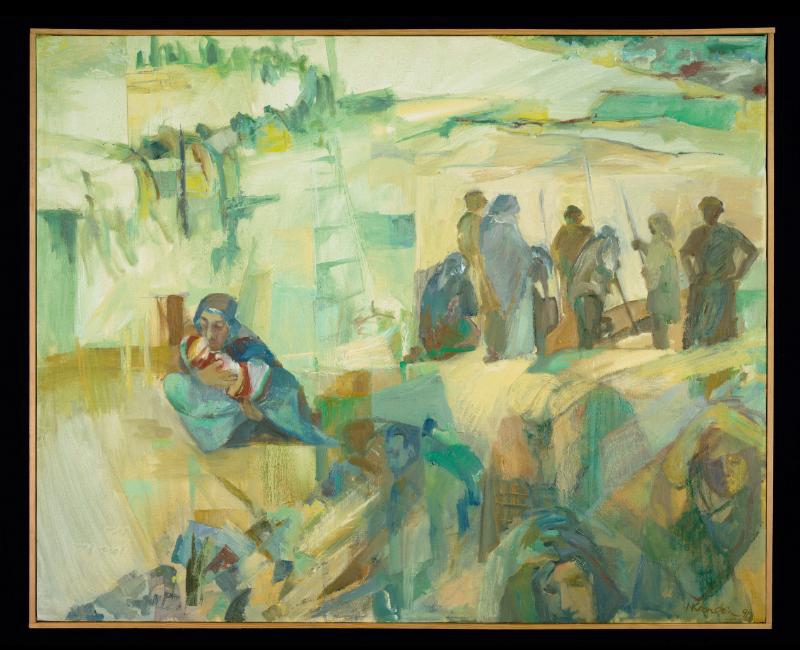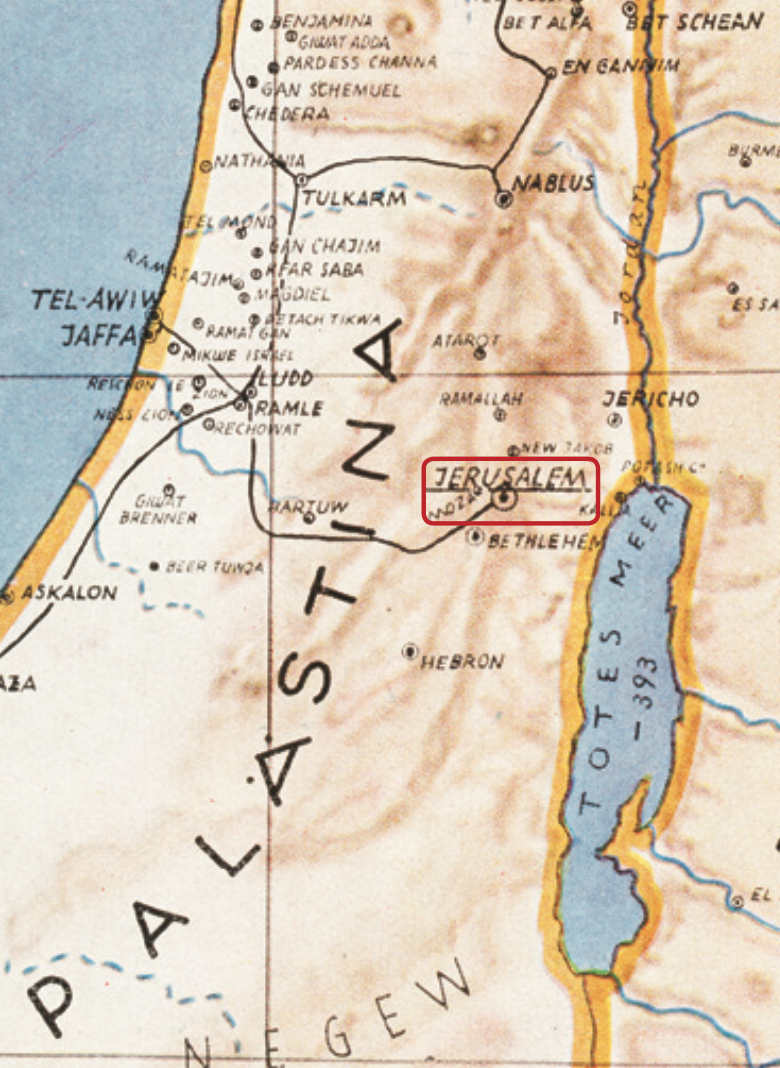Nora Kronstein-Rosen
Artist 9 of 12

Nora Kronstein-Rosen (1925–2013)
ARTISTIC WORK
While Kronstein-Rosen’s initial work in Israel was as a textile designer, by the late 1970s she focused exclusively on paintings. Her chosen motifs were mostly landscapes, cityscapes, and women’s portraits. Her paintings feature a vast array of different media: oil, acrylics, pastels, and several mixed techniques. In this work, painted late in her life and probably in Israel, Nora Kronstein-Rosen addresses the topic of refugees. Although not referencing a specific place or time, the figures in the painting are weary and in an unfamiliar landscape. One woman carefully comforts a baby in her arms, while others shield their faces from the elements or from view. The figures have gathered outside a city, though their next steps seem uncertain.

LIFE & MIGRATION
Nora Kronstein-Rosen was born in 1925 in Vienna. Her mother, Ilona (née Neumann) Kronstein, was also an artist. After the annexation of Austria by Nazi Germany in March 1938, Nora, her mother, and her older sister Gerda fled to Vaduz, Liechtenstein. Beginning in 1939, Nora lived in Switzerland, where she went to the Ecole d’Humanité (the School of Humanity), a progressive boarding school. She studied art at the Académie des Beaux-Arts in Lausanne and at the Zurich Art School under Johannes Itten, a Swiss expressionist painter and designer associated with Bauhaus. After her mother’s death, Nora went to New York and London, later settling in Israel. Her sister, Gerda Lerner, became a pioneer in the field of women’s studies.